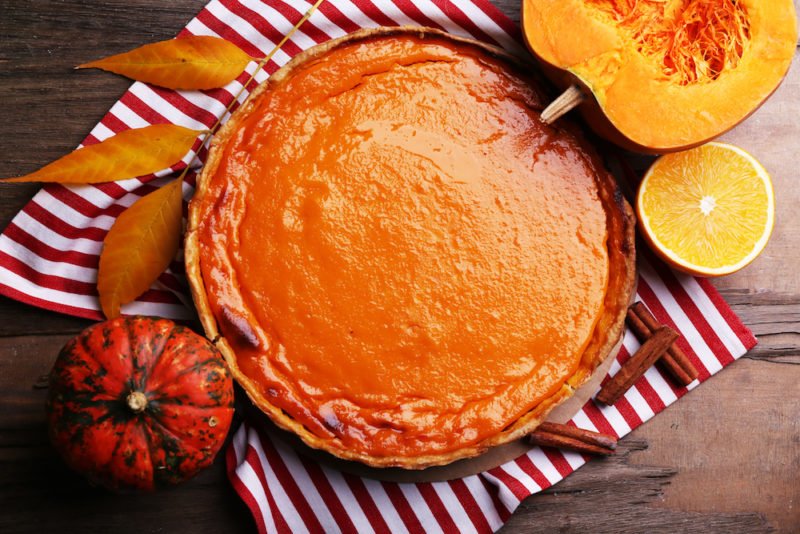 Thanksgiving is just around the corner, and in many of my patients, I see a mixture of joy and angst. Much of that angst is because holiday meals have a reputation (often earned) for being indulgent and less-than-nutritious. But when you stop and take a closer look, there are many perfectly nutritious foods that we traditionally serve during the fall and winter holidays. True, we often serve these foods dressed up with extra doses of fat and sugar (marshmallow-topped sweet potato casserole, I’m looking at you), but it doesn’t have to be that way. Here are six foods worth celebrating for both nutrition and flavor:
Thanksgiving is just around the corner, and in many of my patients, I see a mixture of joy and angst. Much of that angst is because holiday meals have a reputation (often earned) for being indulgent and less-than-nutritious. But when you stop and take a closer look, there are many perfectly nutritious foods that we traditionally serve during the fall and winter holidays. True, we often serve these foods dressed up with extra doses of fat and sugar (marshmallow-topped sweet potato casserole, I’m looking at you), but it doesn’t have to be that way. Here are six foods worth celebrating for both nutrition and flavor:
Turkey
Four ounces of roasted turkey breast, with the skin removed, has 30-35 grams of lean protein. (For comparison, three ounces is the size of a deck of cards.) It will also supply more than half your daily recommended intake of the antioxidant mineral selenium. The leg and thigh have a little less protein and more fat, but if you prefer dark meat, don’t feel you have to choose white meat instead.
Recipe to try: White Bean and Turkey Chili (to use up some of that leftover bird)
Sweet potatoes
Sweet potatoes, with their vibrant orange flesh, are one of the best food sources of beta-carotene, an antioxidant and the plant form of vitamin A. They are also rich in vitamin C and anti-inflammatory antioxidants and phytonutrients. These nutrients are best preserved with steaming or boiling, and including a little fat in your sweet potato recipe helps you absorb the beta-carotene. That said, many holiday sweet potato recipes are vehicles for a lot of fat as well as sugar, so consider whether your old standard recipe could use a tune up.
Recipe to try: Sweet Potato Pecan Casserole
Pumpkin
Like sweet potatoes, pumpkin and other winter squashes are rich in carotenoids. Even better, many of the starchy carbohydrates in winter squash have unique antioxidant and anti-inflammatory properties. Due to its ubiquitousness in pies, pumpkin is the most popular holiday squash, but butternut and acorn squash are also frequent guests at the holiday table.
Recipe to try: Thai Coconut-Pumpkin Soup
Apples
Yes, pumpkin pie reigns supreme as the finisher to a Thanksgiving meal. However, apples are also common in holiday deserts, in part because they’re currently in season. Apples are rich in many phytonutrients that serve as antioxidants and may also help stabilize blood sugar. These phytonutrients are mostly concentrated in the skin, so even if your recipe calls for peeled apples, consider leaving the skins on. Buy organic apples or gently scrub your conventional apples for 10-15 seconds under running water.
Recipe to try: Easy Apple Crisp (with Oat Topping)
Cranberries
These beautiful berries are nutrient powerhouses. Their bright red color is a visible clue to the antioxidant, anti-inflammatory, anti-cancer phytonutrients that lie within. Cranberries, much like other berries, are one of the richest sources of antioxidants. Be aware that you don’t get the same benefit from jellied cranberry sauce that you do from eating the whole berries.
Recipe to try: Cranberry Orange Relish
Brussels sprouts
These cute little sprouts, which look like tiny cabbages, beat out the other common members of the cruciferous vegetable family (broccoli, kale, cauliflower, cabbage and mustard greens) for total amounts of glucosinolates. Those are the phytonutrients that give cruciferous veggies their phenomenal anti-cancer and anti-inflammatory properties. Avoid overcooking Brussels sprouts, as that tends to bring out the sulfur taste that can be unappealing.
Recipe to try: Shaved Brussels Sprout Salad with Walnuts and Pecorino







